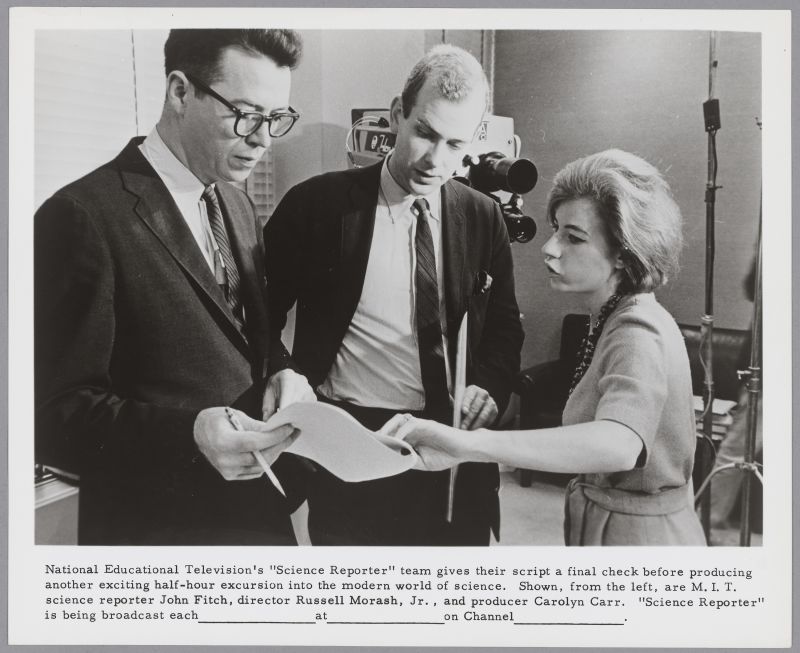
Morash Jr., Russell
Producer/client

Episode 42 of MIT Science Reporter hosted by Robert S. Woodbury and featuring the Automatically Programmed Tools program developed by the MIT Electronic Systems Laboratory and the U.S. Air Force in cooperation with Aerospace Industries Association. The film describes the preparation of control tapes for numerically controlled machine tools through the use of English-like APT language. (CC)
Episode description from WGBH: "A new programming system for computers, that permits a man to communicate with a computer by drawing sketches on an oscilloscope, is the subject of this SCIENCE REPORTER. Like a human assistant, to whom he might explain an idea, the computer helps a designer to decide whether to perfect or reject the idea he has suggested. The computer not only stores each element; it also relocates the elements as the designer needs them.
The system was started by a doctoral candidate at the Massachusetts Institute of Technology’s Lincoln Laboratory, using their giant TX-2 computer. In an interview at the Lincoln Lab in Lexington, Massachusetts with Dr. Steven Coons, professor of mechanical engineering, John Fitch learns how the system came to be developed. Professor Coons explains that one of the biggest problems facing the user of computers today is the man-machine barrier; as things stand now, whenever a man wants to ask a computer to solve a problem, he has to have his problem translated into the mathematical computer language by a very skilled and highly trained mathematician. The computer is hidden behind this mysterious middleman, making it impossible to communicate with the machine directly. Recently, however, many organizations, and many talented individuals have been trying to find ways of making communication with computers easier, quicker and more effective.
John Fitch next meets with Mr. Timothy Johnson of MIT’s Department of Mechanical Engineering to learn about “Sketchpad,” a system developed for communicating with the computer in the quick and easy language of pictures. Mr. Johnson demonstrates how the system works, showing how a light pen traces lines and circles on the face of the scope and how the computer can store, relocated and enlarge these lines on command. More recently Mr. Johnson has been working on a system of three-dimensional representation; he can draw one or more planes of a figure on the scope and the system will then project the figure from any desired view.
Then John Fitch meets with Dr. Larry Roberts of Lincoln Laboratory and sees another development of Sketchpad: a way of using the system to draw and perfect flow charts. With this system, a computer program itself can be represented by a diagram on the scope face and can be tested out at will. Finally, Dr. Roberts demonstrates an alternative system for displaying design elements in three dimensions and discussing the possible applications of the system in industry and research."

Producer/client

Producer/client